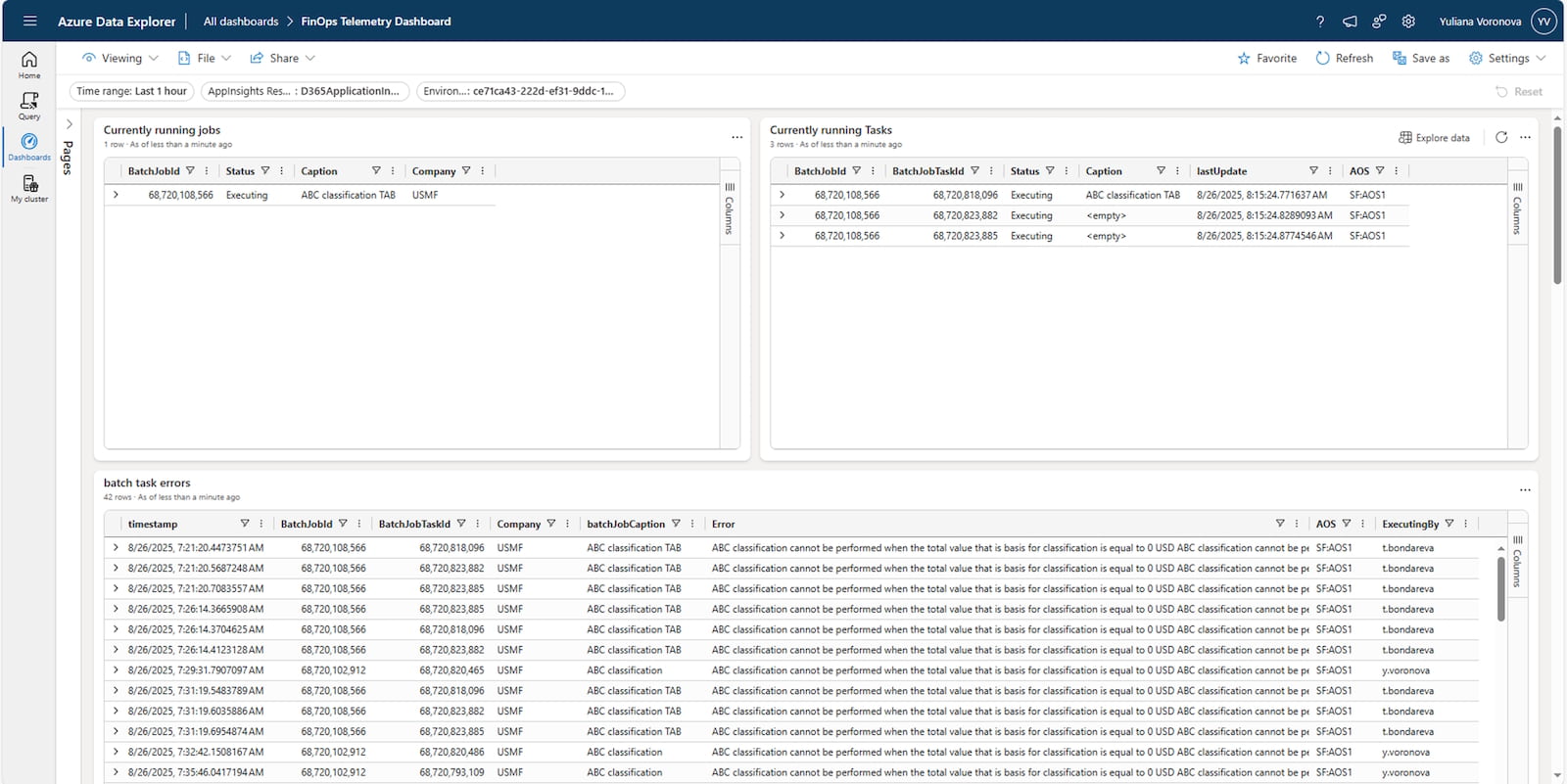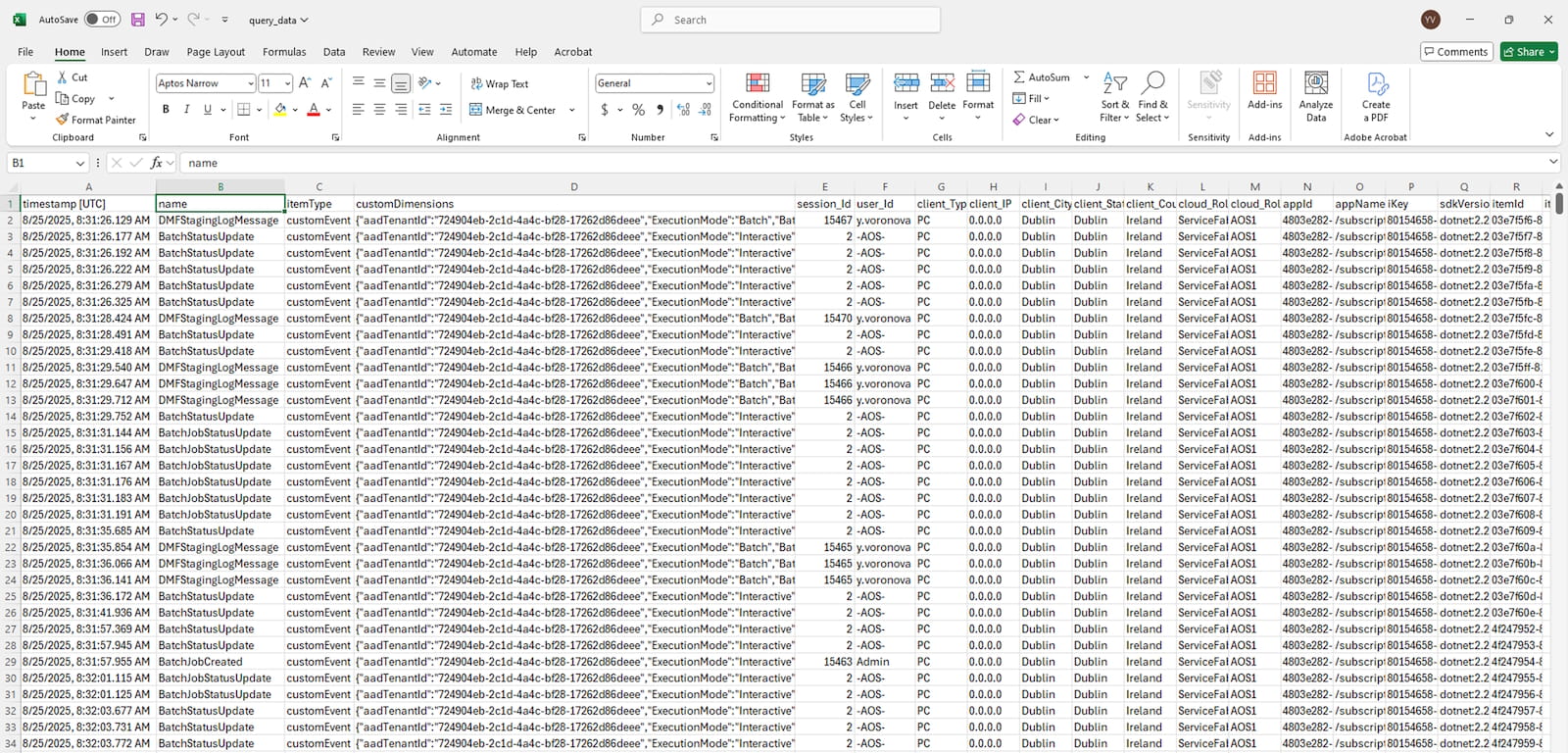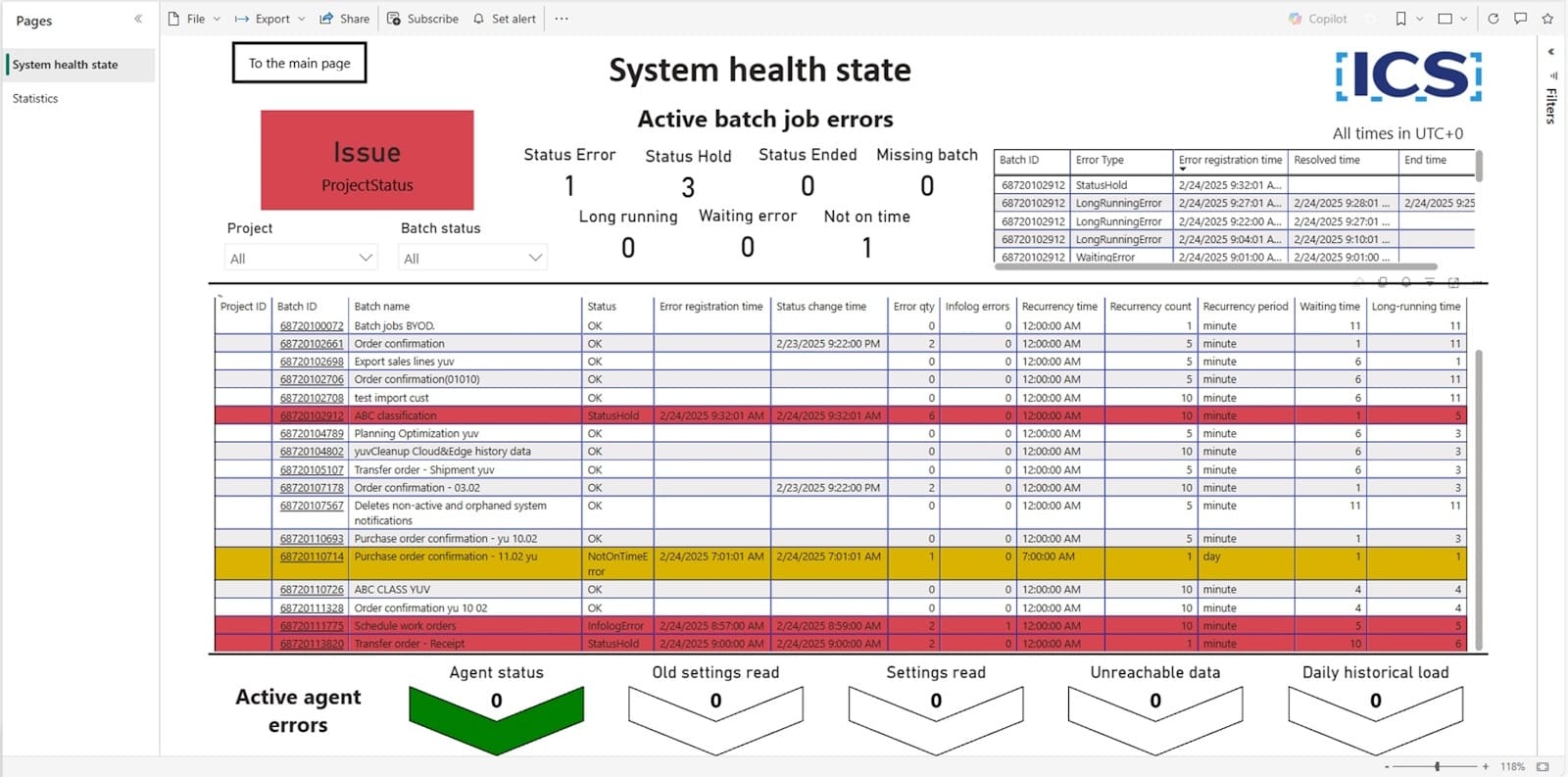Azure Application Insights vs. [ICS] Monitoring Tool: What’s Best for Your Business? (Part 1)
By Yuliana Voronova, Senior Functional Consultant, Industry Consulting Service (ICS)

The Critical Role of Batch Job Monitoring
Every minute of system downtime means lost revenue, missed opportunities, and unhappy customers. Many issues aren’t immediately visible. Batch processes in Microsoft Dynamics ERP systems often operate “behind the scenes,” yet they are essential for business operations – updating data, automating calculations, and validating information. When something goes wrong, the impact is immediate.
Delays, errors, or failures in batch processes can lead to actual problems for businesses, such as:
- Missed deadlines and frustrated customers;
Inaccurate reports and poor business decisions;
Increased costs for issue resolution;
SLA breaches and compliance risks.
However, these problems can be solved or prevented with effective batch job monitoring, which turns these risks into manageable processes through:
- Real-time ERP system oversight;
Instant detection of failures without business disruption;
Early identification and prevention of potential issues;
Improved efficiency of processes and optimized resource usage.
Companies inevitably face a question: How to implement effective monitoring of batch processes? You can, of course, do it manually. But manual monitoring – configuring checks, tracking job statuses, compiling reports, and notifying teams – is time-consuming, error-prone, and hard to scale for large systems.
Or you can use ready-made tools that automate this process, provide transparent analytics and instant error alerts.
In this article, we will examine two such tools:
- Azure Application Insights – a cloud-based service provided by Microsoft for monitoring the performance of Dynamics 365 applications which also allows you to monitor the status of batch jobs;
[ICS] Monitoring Tool – a specialised solution created specifically for automating the control and management of batch processes. Its functionality is largely based on the real-world experience of companies for which it is important not only to detect failures in a timely manner, but also to quickly find their causes.
So, let’s compare their functionality to understand which tool is better suited to the task of monitoring batch processes and best fits specific business needs.
Azure Application Insights Overview
Azure Application Insights offers full visibility into batch jobs in Microsoft Dynamics 365 Finance & Operations (D365FO). It shows active tasks, errors, and workload distribution across AOS instances.
Azure Application Insights allows you to monitor batch processes in D365FO in real time, providing transparent control over tasks and system status.
Dashboards for analysing information can be configured in Power BI or Azure Data Explorer. They show currently running and completed batch jobs (with success or error status), as well as detailed information on all active batch jobs:

Another dashboard shows the load distribution across AOS instances, and the frequency and regularity of task execution:

Moreover, the heatmap visualisation, which displays batch execution on a timeline, allows you to quickly detect anomalies and deviations. This helps users see where delays or deviations in batch execution occur and make informed decisions based on visual analytics:

It is worth noting that in addition to batch execution analytics, Azure Application Insights also logs X++ Exceptions, DMF Errors, and other events, providing details about the location of the error, the user, and the time:
![]()
For in-depth analytics, data can be exported to Power BI or Excel, or connected to third-party applications via REST API, transforming monitoring into a tool for forecasting and resource planning.

|
[ICS] Monitoring Tool Overview
[ICS] Monitoring Tool was created specifically for businesses where batch process stability is mission-critical. It transforms complex, hidden processes into a transparent and manageable system, allowing you not only to detect errors, but also prevent them before they impact operations.
Key Features:
1. Comprehensive Control
All batch jobs are constantly monitored: the system tracks the start time, duration, execution status, and even delays.
The Monitoring Tool dashboard provides full visibility into the batch jobs’ current status and their execution history. While Power BI dashboards display all tracked batch jobs with detailed information on them: current status, parameters, number and status of errors, time of status change, etc.

2. Instant Error Alerts
Errors are classified by criticality and origin. Key employees receive notifications via MS Teams, email, and Power BI dashboards, thus ensuring a rapid response and resolution of problems.

|

|
|---|---|
|
|
|
3. Analytics & Error Prediction
A Power BI dashboard called “Project health statistics” shows the current state of the system and active errors. It also allows you to analyse the history of these errors, identify recurring problems, and predict potential failures.

4. Flexible Customization for Business Needs
[ICS] Monitoring Tool can be easily adapted to your tasks: you can configure monitoring for specific batch jobs, error classifications, or alert parameters. You can also designate specific users or user groups (IT department and Business users) who should receive error notifications. All these configurations are set up on special dashboards in D365FO:


|
What’s Next in Part 2:
In Part 2 of the article, we dive into real-world business cases to see how both tools perform under pressure and how the right solution can save you hours, reduce risks, and keep your business running smoothly.
If you would like to learn more about [ICS] Monitoring Tool and how it can benefit your business, please follow this link or simply contact our team.